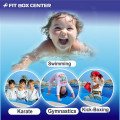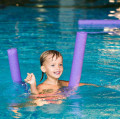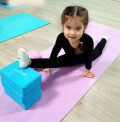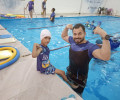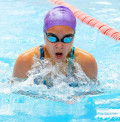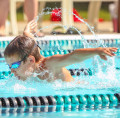Swimming Like Fish Building Kids' Swimming Skills
2024-05-20 - swimmingIntroduction
Swimming is not just a fun activity for kids; it's a crucial
life skill that can benefit them in numerous ways. From enhancing physical
health to ensuring safety, learning to swim is a gift that keeps on giving. In
this article, we'll dive deep into the world of swimming for kids, exploring
the benefits, tips, and techniques to help your child swim like a fish.
Physical Health Benefits
Swimming is a full-body workout that helps improve
cardiovascular health, build muscle strength, and increase flexibility. For
kids, it's a fantastic way to stay active and burn off energy in a productive
manner. Regular swimming can help maintain a healthy weight and improve
coordination and balance.
Mental and Emotional Benefits
Swimming also offers mental and emotional benefits. It can
boost a child's confidence and self-esteem as they master new skills and
overcome challenges. The rhythmic nature of swimming can be meditative, helping
reduce stress and anxiety. Plus, the sense of achievement they get from
progressing in their swimming abilities can be a huge morale booster.
Safety Benefits
Perhaps the most important benefit of learning to swim is
safety. Drowning is a leading cause of accidental death among children.
Teaching kids how to swim and be safe around water can significantly reduce
this risk. It's a critical skill that can save lives, making it a top priority
for parents.
When to Start Teaching Kids to Swim
Ideal Age for Starting
Many experts suggest that the ideal age to start teaching
kids to swim is around 4 years old. At this age, children typically have the
motor skills and attention span needed to learn the basics. However, younger
children can be introduced to the water earlier through parent-child swim
classes.
Early Introduction to Water
Introducing children to water at a young age can help them
become comfortable and confident in aquatic environments. Parent-and-tot swim
classes are a great way to start, allowing infants and toddlers to enjoy the
water in a safe, controlled setting while bonding with their parents.
Creating a Positive Learning Environment
Making Swimming Fun
The key to helping kids learn to swim is to make it fun. Use
toys, games, and playful activities to keep them engaged. Singing songs,
playing with floatation devices, and having fun races can make learning to swim
an enjoyable experience.
Building Confidence in the Water
Building confidence is crucial. Start with simple activities
that your child can easily master, such as blowing bubbles or floating with
assistance. Gradually increase the difficulty as their confidence grows.
Celebrate their successes to encourage a positive attitude toward swimming.
Essential Swimming Skills for Kids
Basic Floating Techniques
One of the first skills kids should learn is floating. Teach
them to lie back in the water with their head back, ears in the water, and
belly up. This position helps them stay buoyant and is a fundamental safety
skill.
Kicking and Arm Movements
Once comfortable with floating, kids can start learning to
kick and move their arms. Encourage them to kick their legs while holding onto
the pool edge or a floatation device. Arm movements can be introduced with
simple strokes like the doggy paddle.
Breath Control
Breath control is another essential skill. Teach kids to
blow bubbles in the water and hold their breath. Practicing this skill helps
them stay calm and prevents them from swallowing water.
Progression of Swimming Skills
From Beginner to Advanced
Swimming skills should be taught progressively. Start with
basic skills like floating, kicking, and breath control. As kids become more
comfortable and confident, introduce more complex strokes and techniques.
Conclusion
Swimming is an invaluable skill that offers a multitude of
benefits for children. From improving physical health to ensuring safety and
building confidence, teaching kids to swim is a worthwhile investment.


